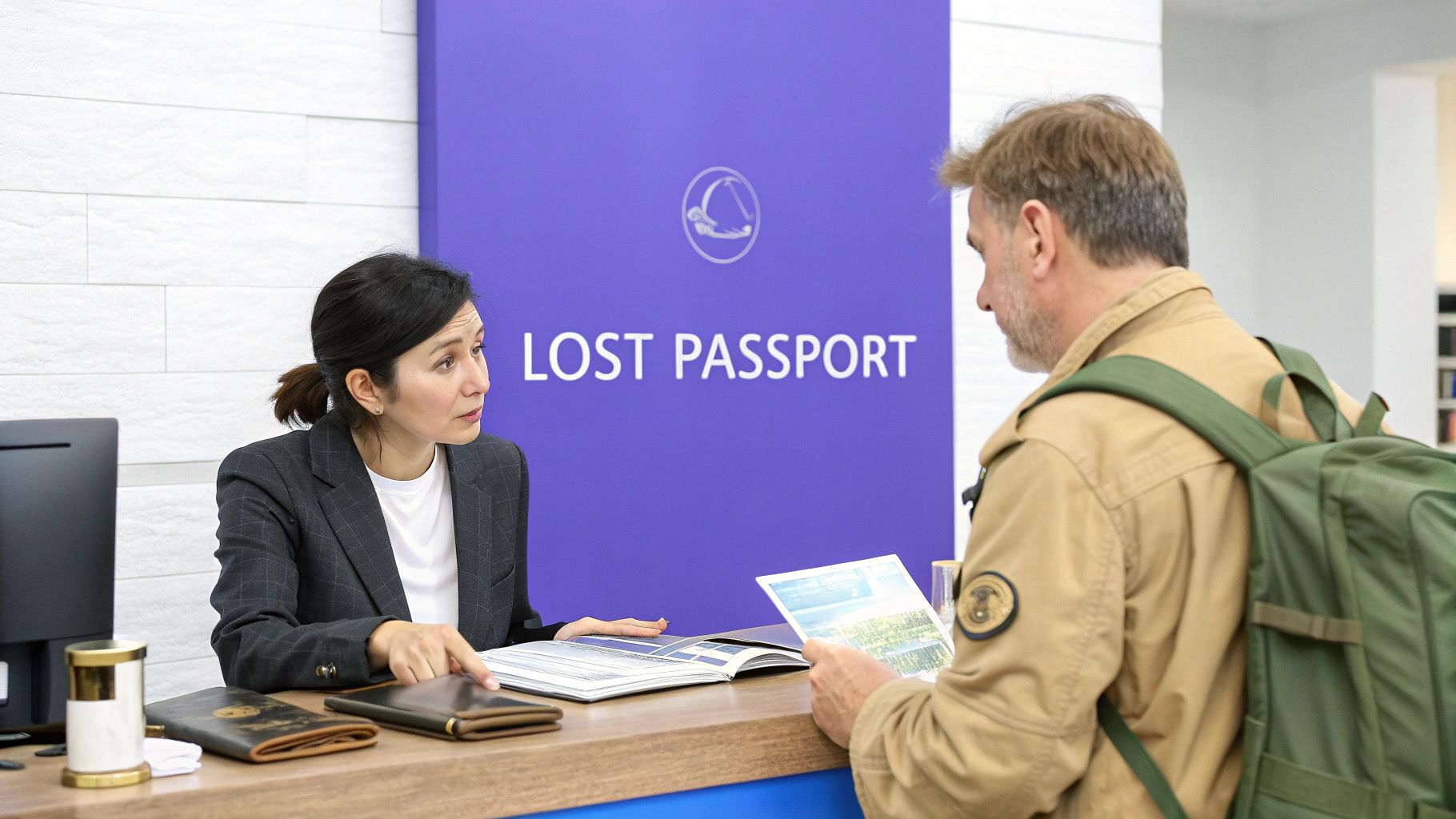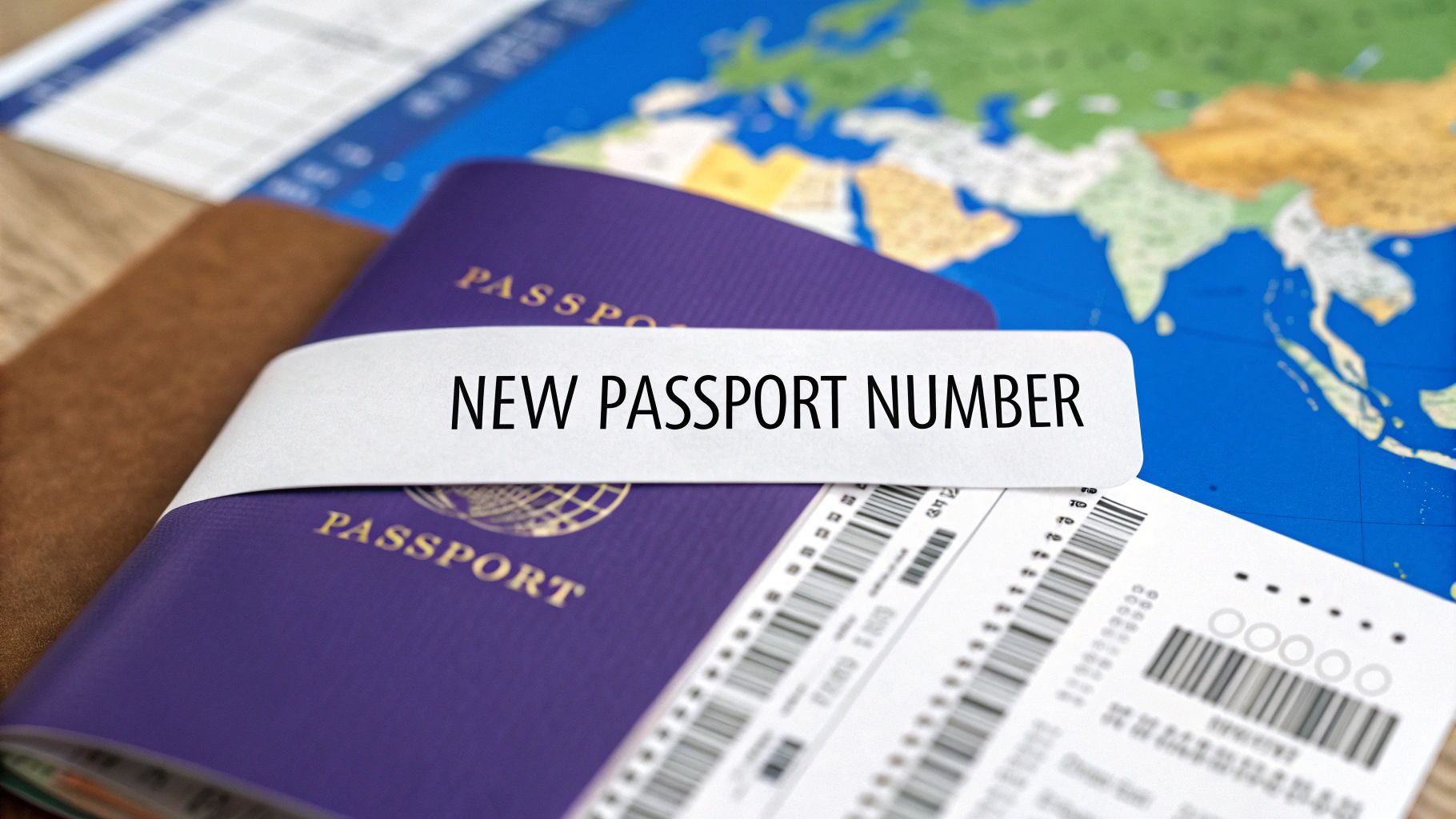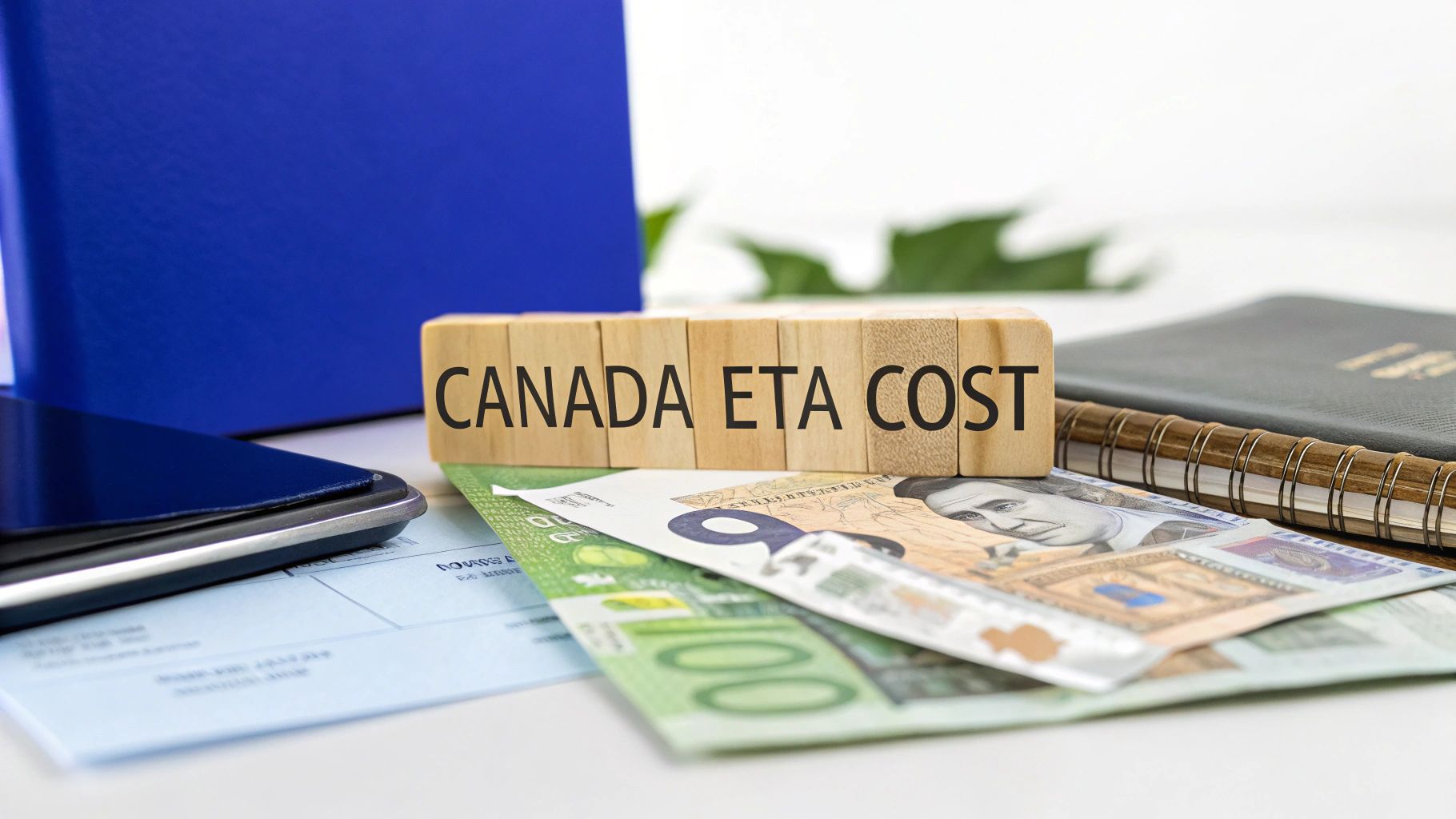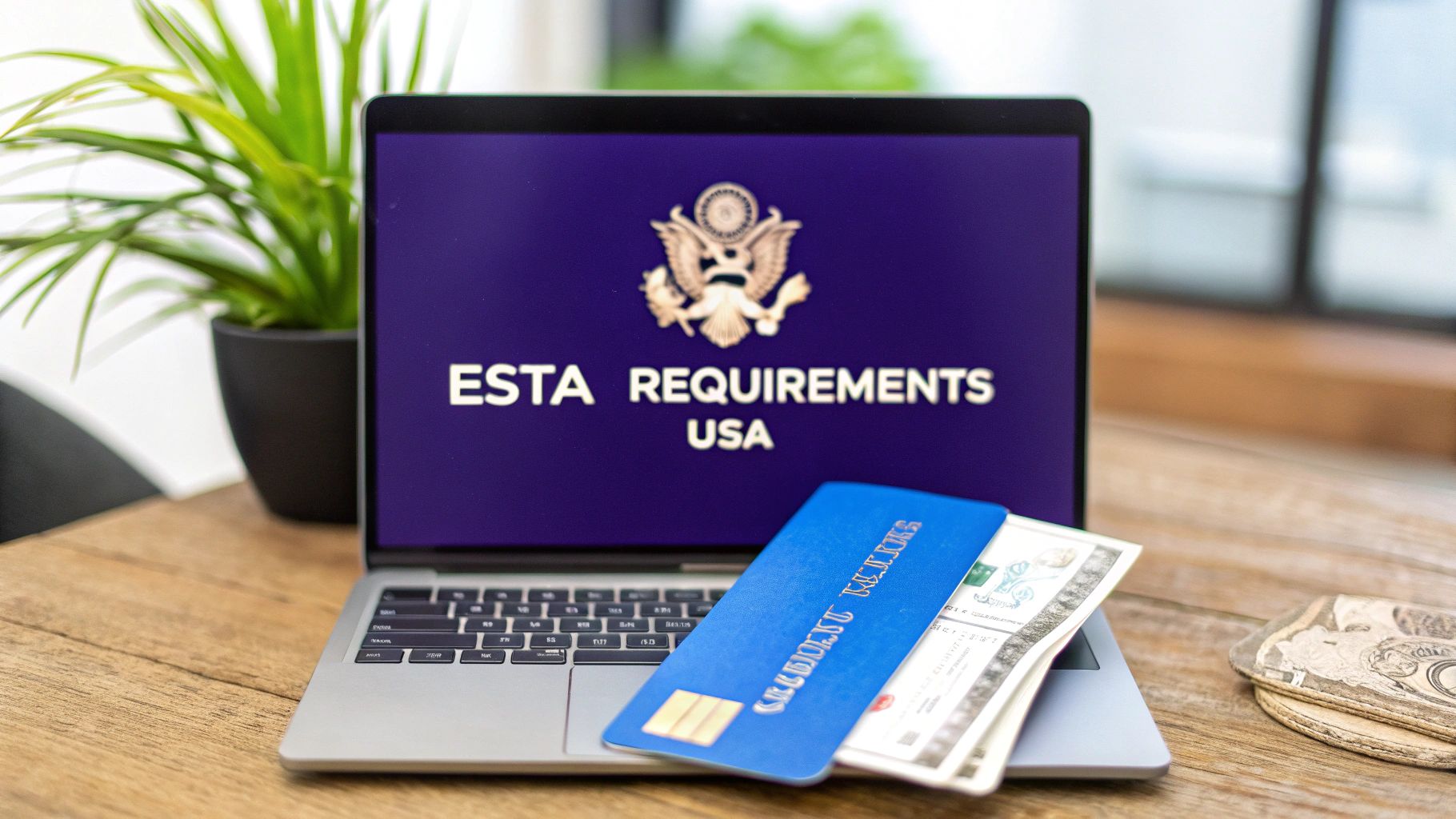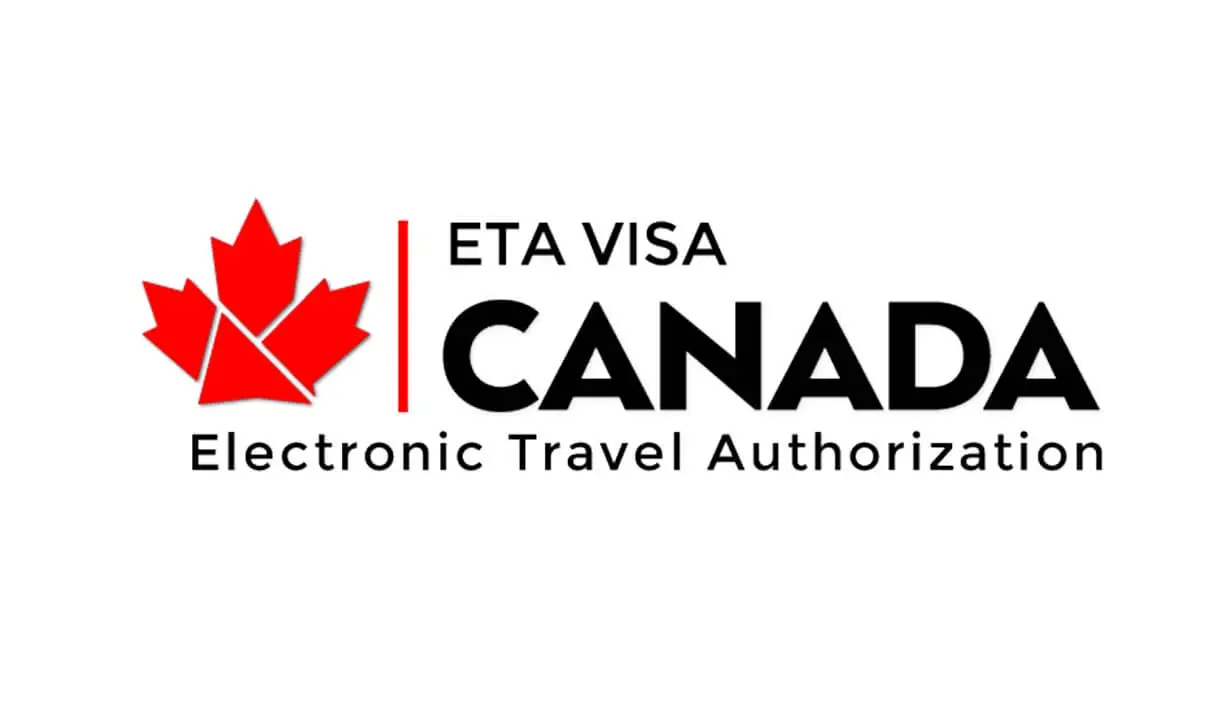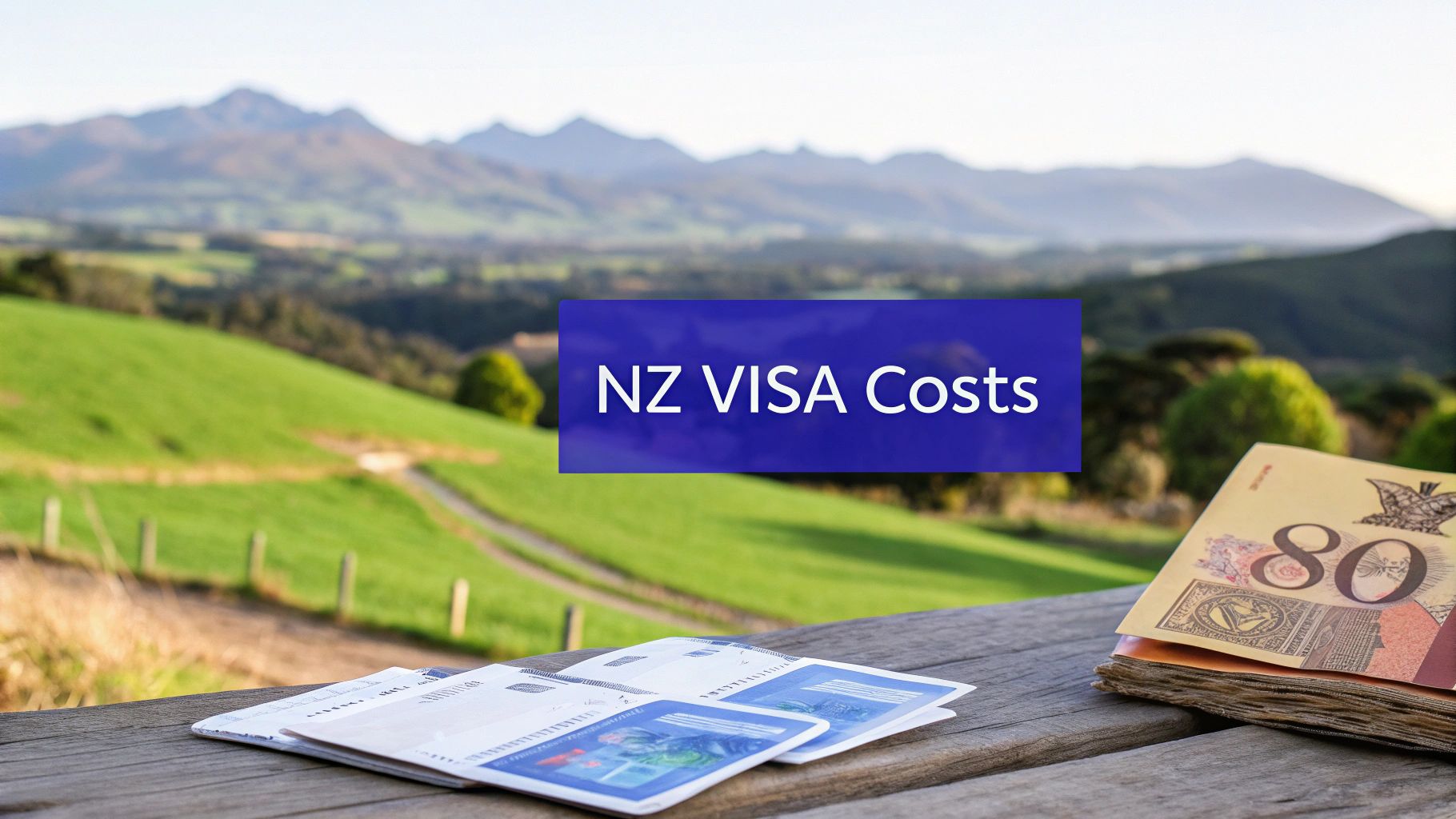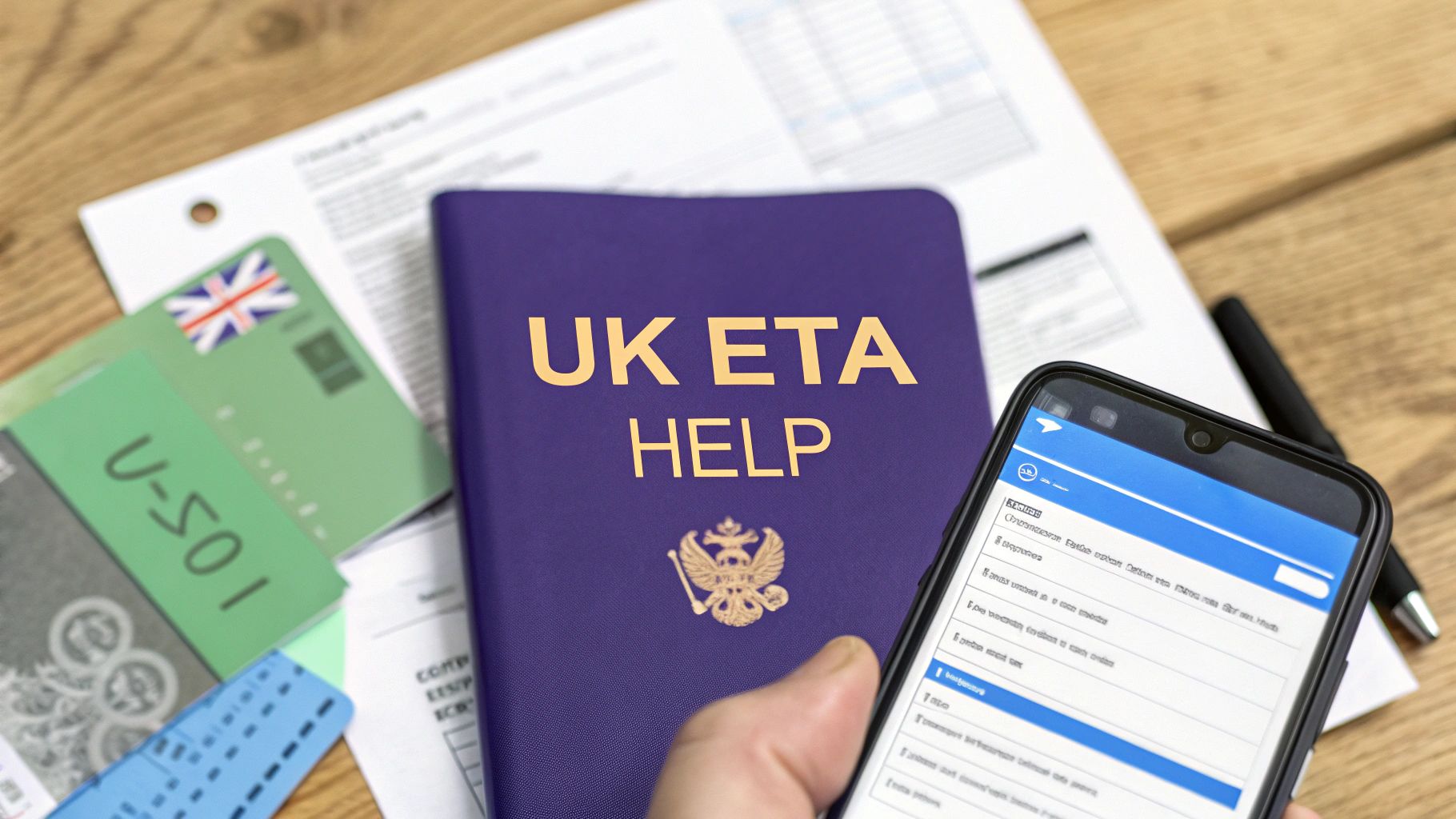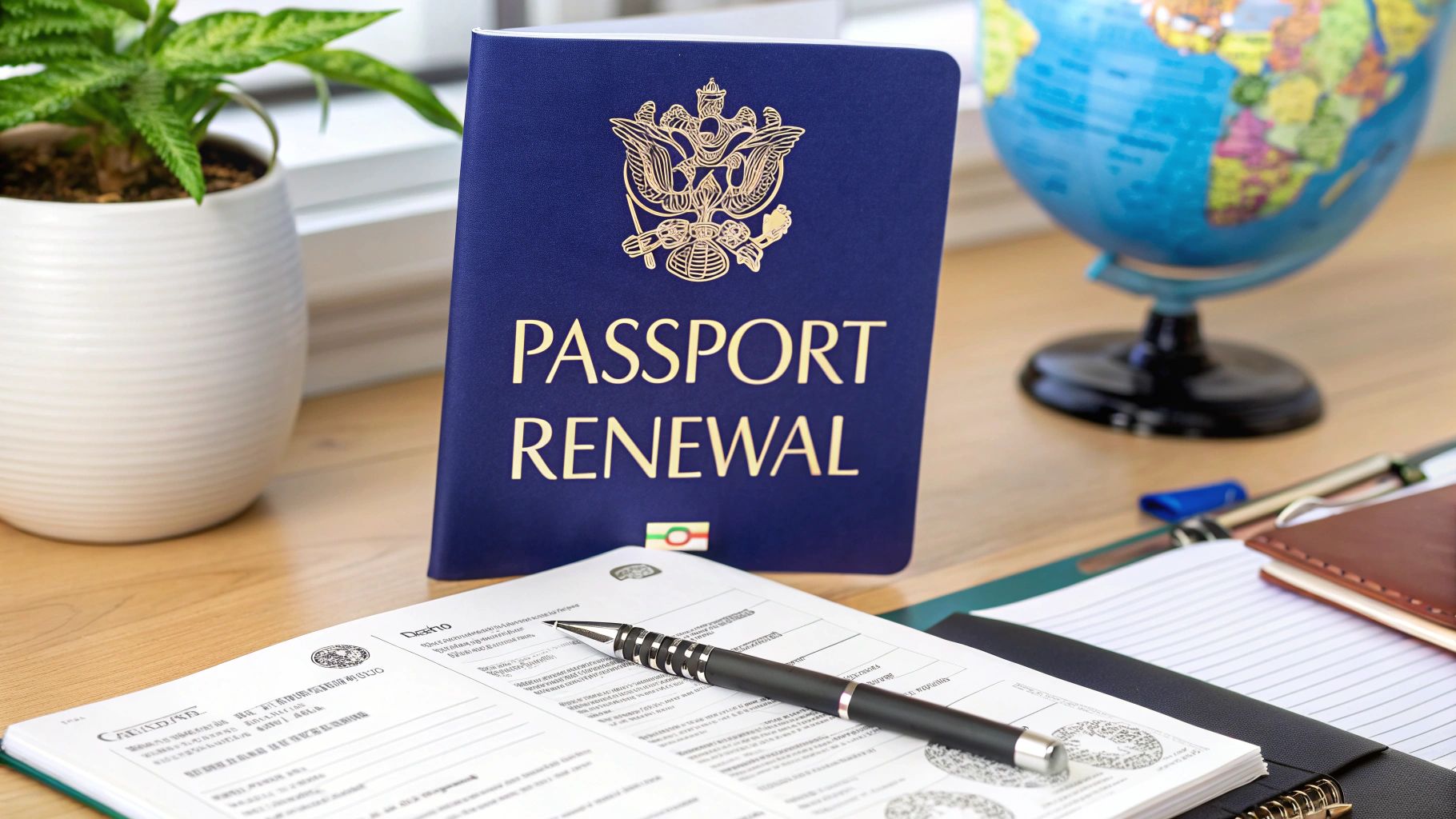
Renewing Passport in Canada: Easy Steps to a New Passport
So, you need to renew your Canadian passport. The first thing you need to figure out is which application path to take. Are you eligible for the much simpler simplified renewal, or do you have to go through the more involved general application process?
Figuring this out upfront is the most important step. The simplified route is quicker, requires way less paperwork, and is honestly the best-case scenario for most people renewing.
Starting Your Canadian Passport Renewal
Renewing your passport isn't just bureaucratic paperwork; it's about keeping your access to the world open. Millions of Canadians go through this every year, and knowing the ropes can save you from a world of stress and potential delays. Let's walk through it, starting with that big first decision: choosing the right application form.
Your choice between a simplified renewal and a general application comes down to the specifics of your most recent passport—its age, its condition, and whether your personal info has changed. Getting this right from the start is non-negotiable if you want to avoid having your application sent back.
Simplified Renewal vs. General Application
What’s the real difference? It all comes down to the documents you need to provide.
Think of a simplified renewal as an update. Your old passport does most of the heavy lifting, acting as your proof of identity and citizenship. A general application, on the other hand, is much more like applying for the very first time. You’ll need to dig up original documents, like your birth certificate or citizenship card.
This handy visual breaks down the three key questions that will point you in the right direction.

As you can see, if your last passport was issued in the past 15 years, it’s still in good shape, and all your personal details are the same, you’re on the fast track with the simplified process.
To make it even clearer, here’s a quick rundown of the two options.
Passport Renewal Options at a Glance
| Feature | Simplified Adult Renewal | General Application |
|---|---|---|
| Old Passport | Must be submitted with the application. | Not required. |
| Proof of Citizenship | Your old passport serves as proof. | Original document (e.g., birth certificate) is required. |
| Guarantor | Not needed. | You must have a guarantor sign your form and photo. |
| Supporting ID | Not usually required. | You must provide supporting identification. |
| Photos | 2 identical photos required. | 2 identical photos required (one signed by guarantor). |
| Best For | Most routine renewals for adults. | Lost/stolen/damaged passports, name changes, or first-time applicants. |
Essentially, if you qualify for the simplified route, take it. It saves you the hassle of finding a guarantor and gathering extra documents.
Understanding the Demand for Renewals
The number of passports Canada processes is pretty staggering. In the last fiscal year alone, Service Canada issued 4,911,368 passports. The demand isn't steady, either—it fluctuates from a low of 293,803 in one month to a peak of 476,785 in another. You can even check out the official passport program statistics to see the trends yourself.
This is why applying well ahead of any planned trip is so critical.
The biggest mistake I see people make is waiting until the last minute. With processing times that can change and a consistently high volume of applications, you should really start your renewal at least six months before your passport expires. That buffer saves you from the stress of unexpected delays.
This idea of planning ahead is a golden rule for any trip. In fact, it's a huge part of how to prepare for international travel. Before you even start looking at flights, make checking your passport's expiry date the very first thing on your to-do list. It's a simple step that can prevent a major travel disaster.
Checking Your Eligibility for Simplified Renewal
Before you get caught up in paperwork and passport photos, the very first step is to see if you can even use the simplified adult renewal process. Think of it as the express lane for renewing your Canadian passport—it’s designed to be faster and easier by cutting down on the documents you need and letting you skip the guarantor.
But, like any express lane, it has strict rules. You have to meet every single requirement. If even one thing doesn't line up, you'll have to take the standard route and fill out the general application.
The Simplified Renewal Checklist
So, do you make the cut? Let's find out. To qualify, your most recent passport must tick all of these boxes.
It must have been:
- Issued when you were at least 16 years old. This is a big one. Passports given to children can't be renewed this way. If the passport you're renewing was from when you were a minor, you'll need to file a general application. You can learn more about the specific passport renewal requirements for minors.
- Issued with a 5-year or 10-year validity. Any short-term or temporary passports are automatically out.
- Issued within the last 15 years. If your passport expired more than 15 years ago, the government considers it too old. You’ll have to start from scratch with a brand new application.
- In your possession and undamaged. You absolutely have to mail in your most recent passport. If it was lost, stolen, or damaged beyond normal wear and tear (think water damage, torn out pages, or a cracked cover), you can't use this simplified method.

On top of that, your personal details must be exactly the same as what's on your old passport. We're talking about your name, date of birth, place of birth, and gender identifier. If you've had a legal name change, for example, you'll need to use the general application and include your supporting legal documents.
A common mistake I see is people underestimating what "damage" means. A slightly bent corner from being in your pocket is usually fine, but if the main biographic page is unreadable or the e-chip is compromised, your application will almost certainly be sent back. If you have any doubt, just use the general application to avoid frustrating delays.
Nailing this first step is the key to a smooth renewal. Getting it right from the start saves you time and ensures your application doesn't get kicked back.
Gathering Your Documents and Nailing the Photos
Alright, you've figured out which application route you're taking. Now it's time to get all your paperwork in order. This part is all about being meticulous—seriously, one small slip-up on a form or a bad photo can get your application sent right back, and nobody wants those kinds of delays.
The Right Application Form
First things first, you need the correct application form. It’s the centerpiece of your renewal package.
If you qualified for the simplified renewal, you'll be looking for the Adult Simplified Renewal Passport Application (PPTC 482). For everyone else, it’s the Adult General Passport Application (PPTC 054). The best way to handle this is to download the right PDF from the Government of Canada website. Fill it out on your computer before you print it—it keeps everything clean, legible, and error-free.
Next up is your old passport. For a simplified renewal, sending in your most recent passport is a must. It's your proof of identity and citizenship all in one. Don't worry about losing it for good; they'll cancel it and mail it back to you separately once everything is processed.
Getting the Photos Just Right
I can't stress this enough: your photos have to be perfect. Incorrect photos are one of the top reasons applications get rejected, and the rules are not just suggestions—they're strict requirements.
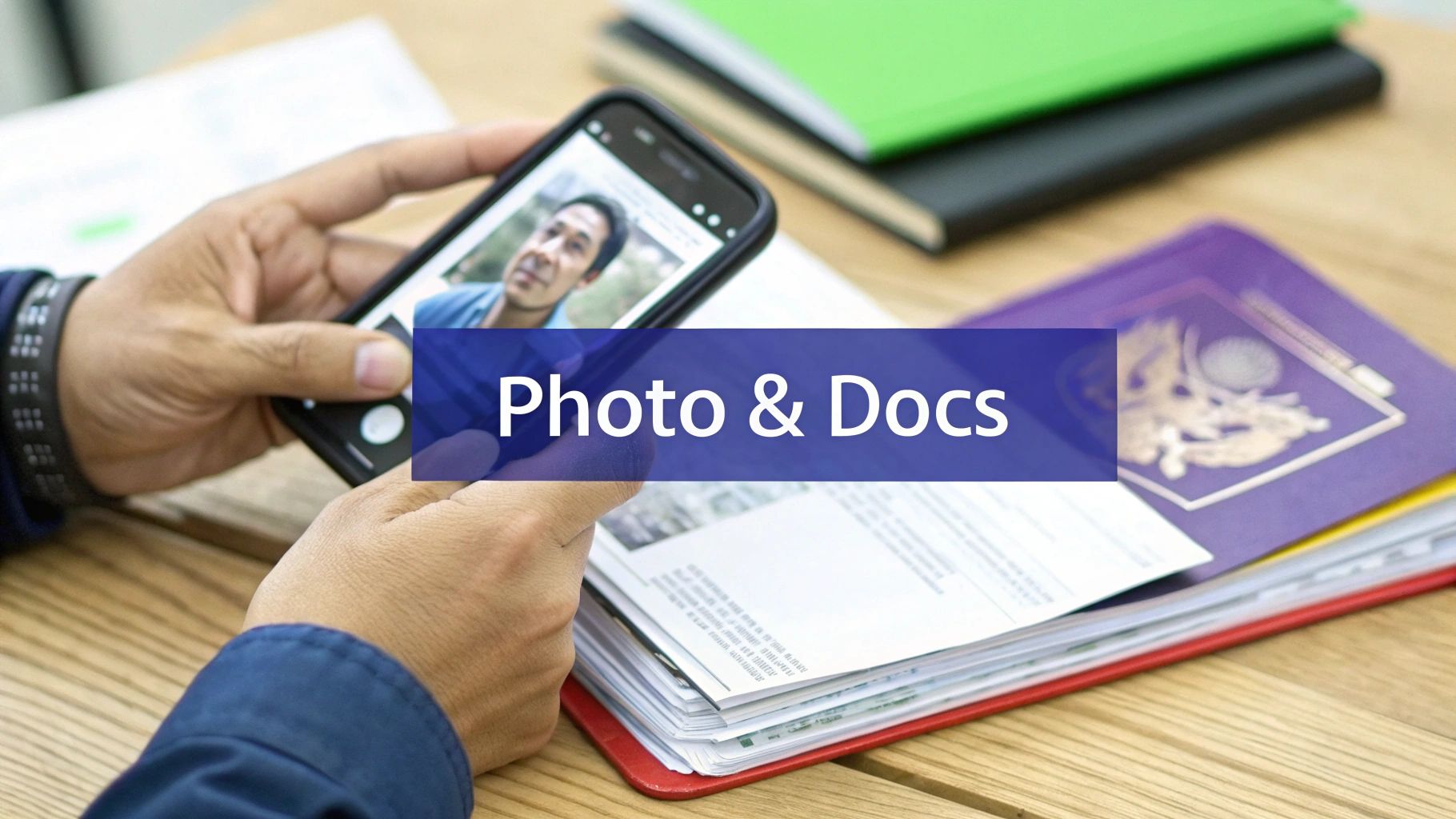
You’ll need two identical photos that were taken in the last six months. They can't be altered in any way, and you have to get them from a commercial photographer. The back of one photo needs to have the photographer’s details (their business name, address, and the date the photo was taken) either stamped or written on it.
Here’s a quick rundown of the non-negotiables:
- Keep a neutral face: Eyes open, mouth shut. No smiling.
- Use a plain background: White or light-colored, with no weird shadows or patterns.
- Take off your glasses: Even if you wear them every day, they have to come off for the picture.
- Ensure it’s a clear shot: The photo needs to be sharp and in focus, with no glare on your face.
If you're a parent helping a teenager renew their passport, remember that anyone under 16 has a different process and will need the general application. And if you're helping younger kids get their very first passport, our guide on how to get a passport for a minor has all the details you'll need.
Extra Documents for the General Application
Taking the general application route? Your document checklist gets a little longer. Since you can't rely on your old passport alone, you’ll need to provide original proof of your Canadian citizenship.
This means digging up one of the following original documents:
- Your Canadian birth certificate
- Your certificate of Canadian citizenship
Photocopies are a no-go; they need the real deal. You'll also need another piece of valid, government-issued photo ID, like your driver's license. Getting all of this organized ahead of time is the key to a hassle-free submission.
Navigating the New Digital Passport Renewal System
The old paper-based passport renewal process is finally getting a much-needed digital upgrade. The Canadian government is shifting to a digital-first system designed to make renewals faster, more accurate, and a whole lot more convenient.
At the heart of this change is a new online renewal portal. It’s built to walk you through the application, helping you avoid those common mistakes that always seem to cause frustrating delays.
The Big Picture: A Modern Passport Program
This isn't just a small tweak; it’s part of a major government strategy to modernize the entire Canadian passport program. The goal is to move away from slow, manual renewals and bring the system into the 21st century.
A limited online portal for simplified adult renewals has already launched, which is a big first step. The long-term plan is to have roughly 50% of all renewals handled completely online. You can get the full scoop on the government's passport modernization plan to see where things are headed.
Right now, the system is in a pilot phase. A small group of applicants who qualify for a simplified renewal have received invitations to try it out. The feedback from these early users will be crucial for ironing out the kinks before it rolls out to everyone.
For most of us, this is a welcome change. It means no more mailing in applications or taking time off work for in-person appointments just for a standard renewal. The system's built-in checks can catch errors before you hit submit, which is a huge relief.
This digital shift also mirrors what’s happening on the other side of the border. International travelers coming to Canada now have to use online systems, too. Many visitors need an electronic travel authorization for Canada, or eTA, which they must secure online before even getting on a plane.
If you’re one of the lucky ones eligible for the new online portal, you'll find a clear, step-by-step process waiting for you. You can upload a digital photo and pay your fees right from your computer, making the whole experience of renewing a passport in Canada simpler than ever before.
Choosing Your Submission Method and Paying the Fees
Alright, you've got your application filled out, your new photos are ready, and your documents are all in a neat pile. Now for the next big decision: how are you going to submit everything?
You've got a few different paths to take, and the best one really depends on how quickly you need that new passport in your hands.

Essentially, you can either submit your renewal in person, send it by mail, or if you've received a special invitation, use the new online portal. Let's break down what makes the most sense for you.
Comparing Passport Submission Methods
Choosing how to submit your renewal application can feel like a big decision, but it mostly comes down to your timeline and personal preference. Some people want the peace of mind of handing their documents directly to an agent, while others are happy to mail it in and wait. Here’s a quick comparison to help you weigh your options.
| Method | Best For | Processing Speed | Key Consideration |
|---|---|---|---|
| In Person | Urgent travel, complex cases, or just for peace of mind. | The fastest way, with urgent/express services available. | Appointments are often necessary, especially in busy cities. |
| By Mail | Standard renewals where time isn't a critical factor. | Slower than in-person; always check the latest standard processing times. | You absolutely must use a secure, trackable courier to protect your documents. |
| Online Portal | Tech-savvy applicants who receive a specific invitation. | Designed for efficiency, but it's still in a pilot phase. | Availability is limited to select simplified renewals by invitation only. |
As you can see, each method has its place. If your trip is just around the corner, heading to a Service Canada Centre is your only real option. But if you have plenty of time, mailing it in is perfectly convenient.
In-Person vs. Mail-In Applications
Submitting your application in person at a Service Canada Centre – Passport Services is hands-down the most secure and fastest route. It’s the only way you can get urgent (end of next business day) or express (within 2-9 business days) service.
If you’re not in a rush, applying by mail is a totally valid choice. Just make sure you use a courier service like Canada Post Xpresspost that gives you a tracking number. This is non-negotiable—it protects your original documents and lets you confirm they’ve arrived safely.
And for Canadians living south of the border, remember that your process is a bit different. You can find specific instructions on renewing a Canadian passport while in the USA.
Getting the Payment Right
The final piece of the puzzle is paying the fees. The amount you owe will depend on whether you choose a 5 or 10-year passport and if you add on any rush services.
- Standard 10-year adult passport: $160
- Standard 5-year adult passport: $120
- Urgent pickup fee: An additional $110
- Express pickup fee: An additional $50
A quick but critical note on payment: If you're mailing your application, you can't just send cash or a personal cheque. You have to either fill out the credit card payment section on the form itself or include a certified cheque or money order made out to the "Receiver General for Canada." Get this wrong, and your application will be sent right back to you.
If you go in person, you’ll have more flexibility. They accept debit, credit cards, or the same certified cheques and money orders. Making sure your payment is correct is the last thing standing between you and getting that renewal process started.
Why Your Canadian Passport Is Such a Big Deal
Renewing your passport isn’t just another task to check off your list. It’s about holding onto one of the most powerful travel documents in the world. Seriously. The Canadian passport consistently ranks among the best, giving you the freedom to explore the globe with far fewer headaches.
This isn't just about national pride; it translates into real-world benefits. A strong passport means you can sidestep the often complicated and costly visa application process for dozens of countries, making spontaneous trips and long-term travel planning a whole lot easier.
Your Key to the World
Just how influential is a Canadian passport? It currently sits around 8th in the world, opening the door to 184 countries without needing a traditional visa beforehand. That's a huge deal. In fact, its global standing recently edged out the United States passport, a significant shift for North American travelers. You can see how these rankings change by reading the latest global passport power comparison.
This is exactly why keeping it up-to-date is so critical. Once you have that fresh passport in hand, you’re ready for anything. You could even start planning some unforgettable trips to Canada and Alaska by train.
Keep in mind, for some visa-free destinations, you might need a quick pre-travel clearance like an Electronic Travel Authorization (eTA). It's a simple online step often required for air travel.
Think of your passport renewal not as a chore, but as an investment in your freedom. A valid passport means you can jump on last-minute flight deals or plan a dream trip without worrying about bureaucratic delays.
Today’s Canadian passports are also packed with advanced security features, like an electronic chip and a tough polycarbonate data page. These are designed to protect your identity and make the document nearly impossible to counterfeit, which means safer travels for you. Renewing this powerful tool is simply a must for any modern traveler.
Your Top Passport Renewal Questions, Answered
Let's tackle some of the most common questions that pop up during the Canadian passport renewal process. Getting these sorted out ahead of time can save you a lot of headaches later. We'll also clear up a popular question about what your visiting friends and family need to fly into Canada.
Can I Still Renew if My Passport Is Already Expired?
Yes, you absolutely can. This is a huge relief for many people. As long as your passport was issued within the last 15 years, you can use the much simpler renewal process, even if it's expired.
The government built this 15-year window into the rules specifically to avoid forcing people into the more complex general application process just because their passport expired.
Will I Get My Old Passport Back?
You sure will. Your old passport will be returned to you, but it won't be in the same envelope as your new one. For security, they mail it back separately after cancelling it to make sure it can't be used fraudulently.
It’s a great keepsake filled with travel memories, and it also serves as an official record of your travel history.
What if I Have to Travel Urgently?
If you're in a pinch and need to travel soon, mailing your application is not the way to go. Your only real option is to apply in person at a Service Canada Centre that offers urgent or express pickup services.
You'll need to bring proof of your travel plans, like your flight tickets or a detailed itinerary, to show why you need the rush service. Be prepared for higher fees, but it's the only way to get a passport in a matter of days.
What Do My Visitors Need to Fly to Canada?
A question we get all the time isn't actually about renewing a passport—it's from Canadians asking what their friends and family from other countries need to visit. For many, the answer is a Canada eTA (Electronic Travel Authorization).
An eTA is a mandatory digital travel permit for visa-exempt foreign nationals who are flying to or transiting through Canada. It's linked electronically to their passport and is valid for up to five years. The official application requires careful attention to detail, as small mistakes can cause delays or rejection, disrupting travel plans.
To simplify the Canada eTA application and increase the chances of approval, consider using AssistEntry. As a third-party application assistance provider, their experts guide you through the entire process, starting from just $79, which includes all government fees. Their service includes a full verification of the application, error-checking, and a compliance review to ensure everything is perfect before submission. This helps your visitors avoid stressful delays and mistakes, ensuring their trip to Canada starts smoothly.
